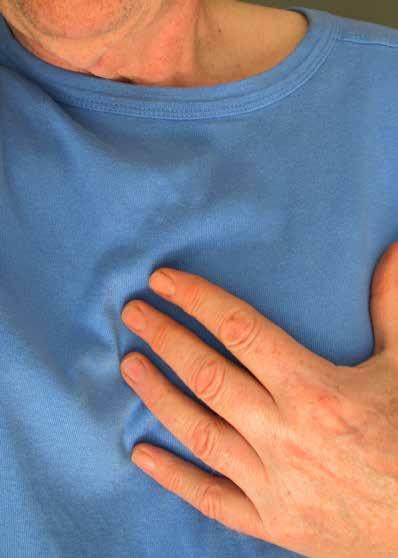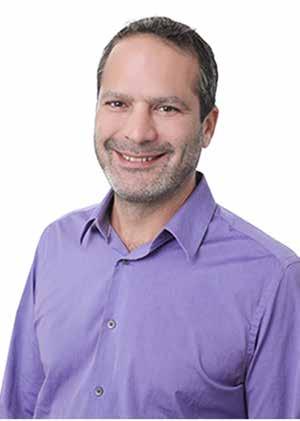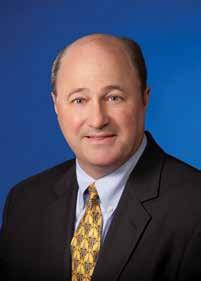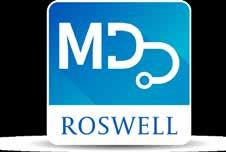
10 minute read
Clinical Features
Home-Based Cardiac Rehabilitation Improves Access and Outcomes while Containing Cost
By Al Kinel and Brett Kinsler
Advertisement
Significant evidence demonstrates cardiac and other physical rehab programs improve health, lower total healthcare expenditures, and decrease subsequent risks of death or disability. Unfortunately, the rates of enrollment in rehabilitation programs are far below the recommended levels, and once enrolled, adherence to prescribed activities is also sub-optimal. Cardiac rehabilitation has a class 1 indication (i.e., strong recommendation) after heart surgery, myocardial infarction or coronary intervention, as well as for stable angina or peripheral artery disease. It has a class 2a indication (i.e., moderate recommendation) for stable systolic heart failure. Yet it is still underutilized despite its demonstrated benefits, endorsement by most recognized cardiovascular societies and coverage by the Centers for Medicare and Medicaid Services (CMS). Low enrollment is particularly true for cardiac rehab, despite cardiac rehab receiving the highest levels of recommendation from the American College of Cardiology. As a result, health systems and the specialists who deliver care in the office are experiencing suboptimal quality levels, and are missing out on potential revenues. Most rehabilitation programs involve some type of exercise training combined with emotional support, education about lifestyle changes, and plans to improve the patient’s condition. Health care teams generally monitor patients while they exercise, teach patients how to avoid injury when exercising on their own, and motivate them to remain compliant with rehab. Insurance and Medicare traditionally cover the costs of facilitybased rehab in the US. Despite the fact that providers frequently articulate the benefits, patients often fail to adhere to prescribed rehab instructions. Sometimes they misinterpret the instructions. Other patients lack transportation, time, or the ability to pay the co-pay or deductible. Concerns for social distancing preclude some patients from making in-person visits to rehab centers during the pandemic. Because it is not an attractive business based on current models, there is inadequate capacity of clinic-based cardiac rehab in many cities. As a result of all of these factors, patients are not getting the rehab they need.
Emerging technologies have enabled new models that hold promise to address these challenges, enhance effective capacity, and improve adherence of rehab, without compromising effectiveness. Virtual rehab simultaneously helps patients recover from an event and prevents downstream issues. The tele-rehab approach allows patients to continue with the same program past the end of a traditional rehab prescription. Innovative

organizations are transforming facility-based programs into the home, with great success.
Home-based training, monitoring of vitals, and virtual consults using telemedicine have been shown to equal the effectiveness of center-based rehabilitation programs in terms of physical fitness, activity levels, and health related quality of life while leading to a higher level of patient satisfaction and adherence, at a lower total cost. Telerehabilitation platforms also encourage clinician-patient interaction that surpasses the exchange that occurs in an office visit.
Proven and Emerging Remote Cardiac Rehab Programs
Sheba Medical Center – A groundbreaking Remote Cardiac Rehabilitation (RCR) program at Sheba Hospital, a top 10 hospital in the world with a leading research institution, has developed a home-based cardiac rehab program and has validated the impact on adherence and clinical impact. Using smartphone mobile technology based on remote care automation vendor Datos Health was shown to overcome barriers to cardiac rehabilitation and became a useful tool for improving access to health promotion interventions. Versus traditional center-based care, the program at Sheba showed significant “At Sterling Heart we are deeply focused on patient out-
comes and cost effective care. Our in office ICR program is
exemplary in both categories, but has patient access limita-
tions and time constraints. We want to help more patients
not only get back to baseline after their cardiac event, but
also empower them to make long term, sustainable lifestyle
changes to avoid future complications. To address this issue,
we are leveraging our expertise in office based cardiac rehab
to provide a home based program that will make this critical
service more available and affordable for individuals battling
cardiovascular disease in WNY. In addition to improving our
patients’ health, this virtual program will be critical to how
we support our referring physicians, especially those pursu-
ing value based care.” Connor Knapp, CEO, Founder Sterling
Heart Care
Sterling Heart is transforming the venue and approach
to cardiac rehab with support from Strategic Interests and
use of a platform from Datos Health, a provider of remote
monitoring solutions. Together, Datos, and Strategic Interests
have applied the platform to effectively address hypertension,
COVID, and now RCR.

Uri Bettesh, CEO of Datosl
advantages in uptake, adherence, and completion of the program increases. Patients in the study experienced:
• a significant improvement in exercise capacity • a significant improvement in high-density lipoproteins levels • no degradation in low-density lipoproteins, triglyceride, glycosylated hemoglobin, and systolic and diastolic blood pressure levels
Exercise adherence was consistent among patients, with more than 63% of patients participating in a moderate intensity exercise program for 150 minutes per week. Patients who participated in RCR adhered to the exercise program and attained clinically significant functional improvement. RCR was found to be a viable option for populations that cannot, or elect not to, participate in center-based CR programs.
Prof. Robert Klempfner, MD, Director of the Israeli Center for Cardiovascular Research and Scientific Director of the ARC Innovation Center at Sheba Medical Center said “The findings of this study reveal considerable advantages of teleCR in the increase of adherence to exercise programs and improved patient outcomes. The versatility of Datos’ remote care platform and its ability to increase patient engagement and adherence through personalization of the application is integral to making tele-CR a viable option for patients unable or unwilling to participate in center-based CR programs.”
Duke University had combined fitness wearables, resistance exercise, aerobic exercise and clinical communications with patients at home. Duke’s Home-Based Cardiac Rehab Program is delivering high outcomes, reduced hospitalization, and strong patient satisfaction scores. Over 90% of their enrolled patients complete the program with data suggesting significant functional improvements in participants.
Sterling Heart in Buffalo, NY became the first ever Medicare certified Intensive Cardiac Rehabilitation (ICR) site in WNY in 2019. They are now adding Home-Based Cardiac Rehab to continue their push for innovation in cardiac care. Sterling Heart is leveraging RCR to expand access to patient care, complement their office based ICR program, and provide a long term solution for patients to achieve their heart health goals. They are utilizing biometric monitoring through wearable devices with clinical intervention, patient education, and motivational support to create the support infrastructure patients need for sustainable heart health. Uri Bettesh, CEO of Datos commented on the use for cardiac rehab , “Automation is key: remote care solutions providers must offer considerably more efficient and advanced products while still being able to operate within the financial and workflow constraints that health organizations are facing today. The ideal scenario, which will save time and costs while creating a better experience for the patient, is to automate as many manual processes as possible. Cardiac rehabilitation services can be automated to benefit from the transition to remote care.
Providers can fund the effort and technology to shift to home-based rehab either by increasing the services reimbursed as part of the fee-for-service model, or by improving outcomes and payouts associated with risk-based contracts between providers and payers. Medicare and a growing number of payers are now reimbursing providers for select rehab performed at home, if under the supervision of providers. This is another example of ways in which they are accelerating the shift from the hospital and the office, to the home.
At the University of Rochester Medical Center, the Predictive Health Monitoring and Activity Core Laboratory (PMAC) is studying new ways to apply wearable and implantable sensor technologies in heart and vascular disease. Application of these predictive health monitoring methods will further impact at-home programs, such as RCR, and fuel models that are not location dependent.
The benefits associated with RCR adherence and impact are starting to be proven. Contact us If you would like help exploring how RCR can address the strategic imperatives facing your organization, and help your patients attain the benefits unleashed by new technologies.
Highmark Inc. announces completion of affiliation with HealthNow New York Inc.
HealthNow President & CEO Dave Anderson announces retirement at end of 2021, while Buffalo, NY leadership remains grounded with senior level appointments in the newly affiliated organization
Highmark Inc. announced today that its affiliation unveiled in June 2020 with HealthNow New York Inc. has become effective.
“We look forward to bringing our resources, tools and advanced technologies to Western and Northeastern New York,” said Deborah RiceJohnson, president of Highmark Inc. “With this affiliation, we begin our path forward to enhance customer and clinician engagement, create better health outcomes, control costs and improve affordability for members in Western and Northeastern New York.”
In the coming months, the newly affiliated organization will be rebranded Highmark Blue Cross Blue Shield of Western New York and Highmark Blue Shield of Northeastern New York.
As a part of the affiliation approval, certain employment commitments were made to ensure job stability in the New York market. In addition, Highmark Western and Northeastern New York will commit $2 million annually for five years in support of programs, services and initiatives aimed at addressing health disparities throughout communities in the health plan’s 21-county New York service region.
After more than seven years as President and CEO of HealthNow, Dave Anderson announced he will be retiring at the end 2021 – marking the affiliation transition as one of his final accomplishments after successfully leading HealthNow through the implementation of the Affordable Care Act, growing HealthNow’s membership, enhancing the company’s community presence and social mission efforts, and, most recently, addressing the COVID-19 pandemic. “Today’s announcement that we are affiliating with Highmark is a shining moment for our members in Western and Northeastern New York and our employees. As the integration of our companies begins, I will plan my departure knowing that we’ve positioned this organization for tremendous success in the years ahead,” said Anderson. “During my tenure, we have always embraced improving health care for everyone we serve, and this affiliation will enable us to accelerate our efforts in improving



health care while continuing to focus on our mission to serve the community.”
Keeping leadership local Highmark is committed to maintaining a local presence in Western and Northeastern New York. The newly affiliated organization will have a community-based Board of Directors, largely comprised of the former HealthNow’s Board members.
Given Anderson’s significant management contributions and to ensure continuity of leadership in the local community, it is expected that Anderson will continue as a member of the Board of Directors of Highmark Western and Northeastern New York (previously HealthNow) in 2022.
While Anderson will remain CEO in the year ahead, HealthNow’s Executive Vice President and Chief Strategy and Growth Officer Michael Edbauer, D.O. will be named President of Highmark Western and Northeastern New York. In this role, he will be responsible for all Western and Northeastern New York health plan activities.
HealthNow’s Senior Vice President and Chief Marketing and Communications Officer Julie R. Snyder will assume a new role in Community Affairs and continue to have accountability for all New York-focused community affairs activities and charitable giving. HealthNow’s Senior Vice President and Chief Network Officer Ron Mornelli will assume a new role in Provider Contracting & Relations and retain accountability for leading contract development with all New York health care providers. Other leadership roles will be announced once the integration structures are finalized.
Moving forward In the near term, there will be no changes in product designs for members with coverage from Blue Cross Blue Shield of Western New York or Blue Shield of Northeastern New York.
Throughout 2021 and beyond, Highmark intends to bring its resources, tools and advanced technologies to Western and Northeastern New York to enhance the products and services offered to members in those areas. This will follow both state and federal regulatory guidelines and timelines. Additionally, Highmark is planning to make available new and enhanced administrative capabilities and technologies focused on improving the member, broker and provider experience.
This affiliation expands Highmark’s health plan footprint to four states and continues its successful track record of affiliations with the Blue Plans in Delaware and West Virginia and its merger with Blue Cross of Northeastern Pennsylvania.
The affiliation brings Highmark health plan membership to more than 6 million people – making it the fourth largest Blue Plan in the nation – and will add to Highmark’s strong financial position.











